Best Oregonian Semi-soft Cheese Types
Oregon Blue is an American blue cheese made from raw cow's milk. The cheese ages for a minimum of 90 days in Rogue Creamery's caves. The texture is firm and buttery, and the aromas are earthy and clean. The flavors are mellow, sweet, and buttery, with hints of cream.
On the inside, there are veins of earthy blue molds. Oregon Blue has been produced since 1957 and has won numerous awards. It's recommended to pair it with a glass of Riesling or Pinot Noir.
Pair with
Oregonzola is an American Gorgonzola-style cheese hailing from Oregon, hence the name. It was created by Ignazio Vella in the late 1990s. The cheese is made from cow's milk and it's aged in Rogue Creamery caves for at least 6 months. During the maturation period, the cheese develops its smooth, creamy, moist, and buttery texture of the paste, which is laced with distinct blue veins.
The aromas are fruity, while the flavors are tangy, sweet, and savory, with hints of caramel and pepper coming from the blue mold.
Caveman Blue is an American blue cheese hailing from Oregon, where it's produced by Rogue Creamery. The cheese is made from raw cow's milk and it's aged in caves for a minimum of 6 months. As a result, the natural rind is speckled with mold, and underneath it the texture is dense, firm, and buttery.
The aromas are fresh and grassy, while the flavors are complex - fresh, sweet, milky, and buttery, with hints of bacon, beef, vanilla, and hay. Use it on hamburgers or eat it with crackers and a glass of bold red wine.
Madrona is an American taleggio-style cheese hailing from Dundee, Oregon, where it's produced by Briar Rose Creamery. The cheese is made from goat's milk and it's usually left to age from 4 to 8 weeks before consumption. Underneath its natural rind, the texture is semi-soft and creamy.
The aromas are herbal and fruity with hints of grapes, while the flavors are mild and creamy. It's recommended to serve Madrona with pear chutney.
Takelma is an American cheese hailing from Rogue River, Oregon, where it's produced by Pholia Farm Creamery and Dairy. The cheese is made from raw goat's milk and it's left to age from 3 to 5 months before consumption. Underneath its annatto-washed rind, the texture is firm, semi-soft, and creamy.
The aroma is milky, while the flavors are buttery, smooth, and nutty. Takelma is named after local Native Americans who used to live near the Pholia farm.
Cacow Belle is an American cheddar cheese hailing from Oregon, where it's produced by Rogue Creamery. The cheese is made from pasteurized cow's milk, artisan chocolate, and spices. It's usually aged for over 30 days before consumption.
Underneath its natural rind, the texture is semi-soft, smooth, creamy, and marbled (due to the chocolate). The aromas are intense and spicy, while the flavors are savory, sweet, and spicy. It's recommended to pair this seasonal cheese with coffee, Riesling, Barolo Amarone, or tawny port.
Pair with
Hillis Peak is an American cheese hailing from Rogue River, Oregon, where it's produced by Pholia Farm Creamery and Dairy. The cheese is made from raw goat's milk and it's aged from 6 to 8 months before consumption. Underneath its olive oil and smoked paprika-rubbed natural rind, the texture is semi-soft, firm, smooth, dense, and supple with occasional irregular eyes dispersed throughout the paste.
The aromas are grassy, earthy, and milky, while the flavors are sweet, clean, and tangy. Hillis Peak was named after a mountain near the farm.
Freya's Wheel is an American cheese hailing from Oregon, where it's produced by Briar Rose Creamery. The cheese is made from goat's milk and it's aged from 7 to 12 weeks before consumption. Underneath its bloomy rind, the texture of this Garrotxa and Ticklemore-inspired cheese is semi-soft, firm, and chewy, dotted with small eyes.
The aromas are rich, while the flavors are savory, sweet, and creamy. The cheese is named after a Norse god of beauty and love. It's recommended to pair it with a glass of medium-weight beer with rich and malty aromas.
Iris is an American cheese produced by Briar Rose Creamery in Oregon. The cheese is made from fresh goat's milk and has a rind that's washed in brine. Underneath the washed rind, the texture is chewy and fudge-like. The aromas are grassy and fruity with hints of straw and minerals, while the flavors are earthy and lemony.
It's recommended to pair Iris with fresh fruit and a glass of white wine. In 2012, the cheese has won the 1st place at the American Dairy Goat Cheese Competition.
Best Oregonian Semi-soft Cheese Producers
Rogue Creamery was founded in 1933 in Oregon, and has since become a recognized name in the cheese industry, specializing in organic, hand-crafted cheeses with a particular focus on blue cheeses. The creamery has maintained high standards of quality over the years and has built an outstanding reputation in the United States and worldwide.
Rogue Creamery is committed to sustainability, with its business model based on environmentally responsible practices. The creamery uses only milk from local farms that meet strict organic production standards. The milk used for their cheeses comes from farms that practice sustainable agricultural methods.
AWARDS
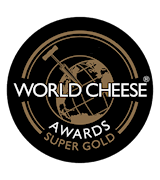
World Cheese Awards - Super Gold
2022
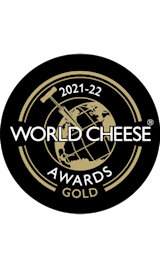
World Cheese Awards - Gold
2021
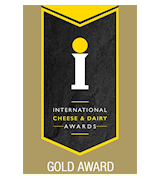
International Cheese Awards - Gold
2024, 2023
BEST Rogue Creamery Cheeses
Best Oregonian Semi-soft Cheeses
Smokey Blue is a unique artisan blue cheese produced by Rogue Creamery, an award-winning cheese producer based in Oregon, USA. This cheese is distinguished by its process of cold-smoking over Oregon hazelnut shells, which imparts a distinctive smoky flavor that complements the rich, creamy profile of the blue cheese.
Smokey Blue showcases a smooth yet crumbly texture, with flavors of hazelnuts, caramel, and a hint of sweetness that balances the sharpness of the blue mold. It is often celebrated for its versatility and can enhance the flavor profile of both savory and sweet dishes.
AWARDS
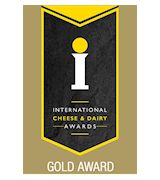
International Cheese Awards - Gold
2024
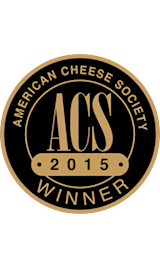
American Cheese Society Judging & Competition Awards - 1st Place
2015, 2009
TasteAtlas food rankings are based on the ratings of the TasteAtlas audience, with a series of mechanisms that recognize real users and that ignore bot, nationalist or local patriotic ratings, and give additional value to the ratings of users that the system recognizes as knowledgeable. TasteAtlas Rankings should not be seen as the final global conclusion about food. Their purpose is to promote excellent local foods, instill pride in traditional dishes, and arouse curiosity about dishes you haven’t tried.




